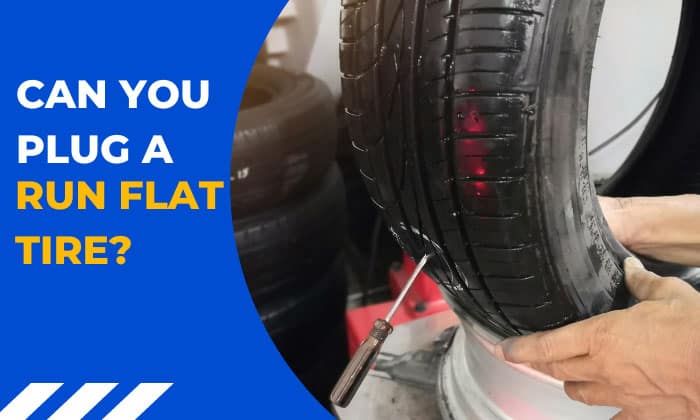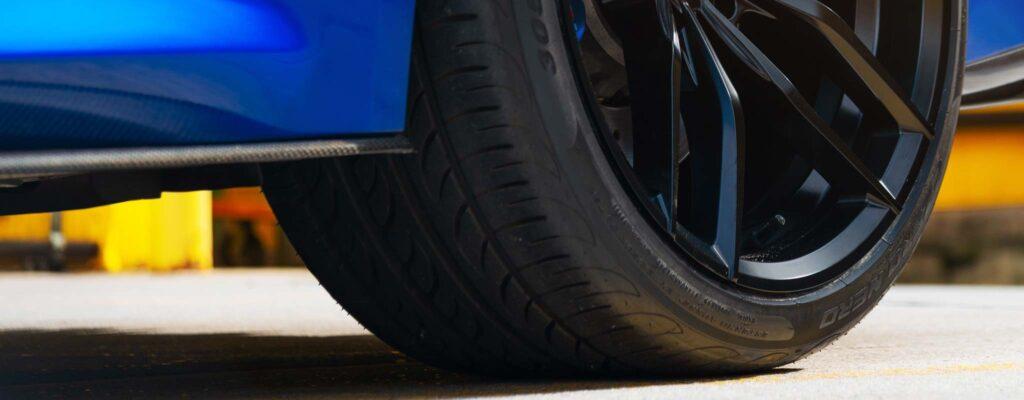Run-flat tires can last up to 50 miles, but it’s not recommended to drive on them for more than 10-20 miles. Run-flat tires are becoming popular in the automobile industry because of their safety features.
Unlike conventional tires, run-flat tires can operate even after they have lost air pressure. But, like all tires, they are not eternal and will eventually need to be replaced. There are several factors that need to be taken into consideration when determining the lifespan of run-flat tires.
In this article, we will discuss how long run-flat tires can last, the factors that contribute to their longevity, and how to take care of them to extend their lifespan. Finally, we will also discuss the differences between run-flat tires and conventional tires.

Credit: www.ppmc-transport.org
What Are Run-Flat Tires?
Explanation Of How Run-Flat Tires Work
Run-flat tires refer to a type of tire designed to allow you to drive your vehicle for a certain distance, even after the tire loses air pressure. Here’s how they work:
- They have reinforced sidewalls that enable the tire to support your vehicle’s weight even when there’s no air pressure in the tire.
- Run-flat tires have a monitoring system that alerts you when air pressure is lost, preventing complete tire failure.
- These tires come with unique treads that reduce heat, limiting the potential for blowouts and prolonging the tire’s life.
Different Types Of Run-Flat Tires Available
There are two types of run-flat tires available: self-supporting and support ring.
Self-supporting:
- These tires have reinforced sidewalls that enable them to support your vehicle even without air pressure.
- Self-supporting tires are capable of running up to 50 miles at a maximum speed of 50mph.
Support ring:
- These tires have a ring made of hard rubber or special alloy attached to the wheel.
- The ring supports the vehicle’s weight if the tire loses air pressure, enabling you to drive for up to 100 miles.
Advantages Of Using Run-Flat Tires
Here are some advantages of using run-flat tires:
- You don’t have to worry about changing a flat tire on the roadside. You can continue driving to a safer location.
- Run-flat tires save space. You don’t have to carry a spare tire, a jack, and other tools.
- These tires reduce the risk of a blowout because they are equipped with special treads.
Run-flat tires are becoming increasingly popular among drivers for their convenience, safety, and space-saving properties. They are a perfect option for those who want peace of mind while driving and who want to avoid the inconvenience of changing a tire on the roadside.
How Long Can You Rely On Run-Flat Tires?
Run-flat tires are engineered to help you avoid the inconvenience of changing a tire on the road. But, just like any other tire, they have a limited lifespan. That begs the question: how long can you rely on run-flat tires?
Factors That Affect The Lifespan Of Run-Flat Tires
Several factors contribute to the durability of run-flat tires. Some of these factors include:
- Driving habits: Hard braking, excessive cornering, and erratic driving can cause wear and tear on run-flat tires.
- Road conditions: Poor road conditions, inclines, potholes, and debris can damage the tires or cause aging, leading to a shorter life span.
- Tire quality: The quality of run-flat tires you choose can influence its lifespan significantly.
- Climate: Extreme temperatures, both hot and cold, have adverse effects on run-flat tires.
Comparison Of Run-Flat Tires With Regular Tires
Run-flat tires use reinforced sidewalls that allow them to function even when they lose air pressure. They are heavier and stiffer than regular tires, and they offer reduced rolling resistance and less traction. Here is a comparison of run-flat tires with regular tires:
- Run-flat tires provide safety advantages over regular tires, providing you with better control when a tire punctures.
- Run-flat tires are more expensive compared to regular tires.
- Run-flat tires’ lifespan is shorter compared to regular tires due to their design.
- Run-flat tires are much rougher over bumps, leading to a less comfortable ride.
Average Lifespan Of Run-Flat Tires
The average lifespan of run-flat tires is between 50-75 miles, depending on the manufacturer’s specification, driving styles, climate, and road conditions. However, with proper care and maintenance, you can extend the life of your run-flat tires.
How To Check And Maintain Run-Flat Tires For Optimal Performance
Maintaining run-flat tires is crucial in extending their life. Here are some factors to consider for optimal performance:
- Rotate your run-flat tires regularly.
- Ensure proper inflation levels are maintained to prevent overheating.
- Keep an eye out for wear and tear, such as bulges and damage to the tread, which signals the need for replacement.
- Check the alignment of your wheels, as improperly aligned wheels put more pressure on your tires.
Run-flat tires provide incredible benefits primarily in terms of safety in the event of a puncture, but they have a limited lifespan. With proper care and maintenance, they can provide optimal service.
Advantages And Disadvantages Of Run-Flat Tires
Run-flat tires are a viable alternative to traditional tires, as they are capable of traveling a certain distance without air pressure. While they can be convenient, they also have their drawbacks. Let’s dive into the pros and cons of using run-flat tires.
Pros And Cons Of Using Run-Flat Tires
Pros:
- You can safely drive on flat tires. Run-flat tires can drive for up to 50 miles with a puncture, giving you ample time to reach the nearest service station.
- Run-flat tires are lighter than traditional tires, making them more fuel-efficient.
- You can save space in your vehicle since you won’t need a spare tire.
Cons:
- Run-flat tires are more expensive than a traditional tire. The cost can be higher due to the technology built into the tire to enable it to continue driving without air pressure.
- Run-flat tires don’t last as long as traditional tires. The tread wears out more quickly due to the stiffness of the tire.
- The ride can be rougher on run-flat tires, and the tire’s stiffness can cause vibrations in your vehicle.
Cost Implications Of Repairing Or Replacing Run-Flat Tires Compared To Regular Tires
When it comes to repairing or replacing run-flat tires, the cost is higher than traditional tires. Since the tire has a unique design, it can be more challenging and costly to repair them. Additionally, since run-flat tires are not as durable as traditional tires, they may need to be replaced more frequently, incurring more costs.
Effect Of Run-Flat Tires On Overall Vehicle Performance
Run-flat tires can affect your vehicle’s performance in different ways. On the one hand, they are lighter, which means better fuel economy and handling. On the other hand, run-flat tires can cause harsher rides, vibrations, and noise. Additionally, since they are stiffer, run-flat tires can lead to quicker and uneven wear, leading to frequent replacement.
In the end, it is up to the individual driver to decide if the benefits of run-flat tires outweigh the disadvantages.
Safety Considerations With Run-Flat Tires
When it comes to car safety, the importance of tires cannot be overstated. Choosing the right tire type plays a crucial role in ensuring your car’s safe and smooth driving experience. Run-flat tires have become popular due to their unique feature of allowing you to keep driving even after experiencing a puncture.
However, there are several safety considerations you should keep in mind when driving on run-flat tires.
Best Practices For Driving With A Punctured Run-Flat Tire
It is recommended to follow certain best practices to ensure your safety when driving with a punctured run-flat tire, such as:
- Reduce your driving speed: It is essential to slow down and maintain a steady speed while driving on a punctured run-flat tire. This minimizes the risk of tire blowouts and increases your car’s stability.
- Avoid sudden maneuvers: Abrupt movements can cause a punctured run-flat tire to detach from the rim, causing your car to lose control. Therefore it is better to avoid sudden maneuvers such as sharp turns, hard braking, or accelerating suddenly.
- Drive to the nearest service station: Never try to drive for too long on a punctured run-flat tire. Instead, drive to the nearest service station as soon as possible to get it repaired or replaced.
Risks Associated With Driving On Run-Flat Tires For Too Long
While run-flat tires are designed to keep you driving even after a puncture, they have their limitations. Driving on a punctured run-flat tire for too long can cause potential hazards such as:
- Tire damage: The sidewalls of a punctured run-flat tire can severely damage the tire, causing it to become irreparable. Replacing the tire is the only solution in such cases.
- Decreased performance: As the tire gets damaged, its performance decreases. You may experience a rough ride, loss of control, and decreased fuel efficiency, leading to risky situations on the road.
- Potential accidents: Driving on a punctured run-flat tire for an extended period increases the risk of a tire blowout, causing an accident.
How Weather Conditions Affect The Performance Of Run-Flat Tires
Weather conditions have a significant impact on the performance of run-flat tires. Extreme weather conditions such as hot summers or severe winters can affect the tire’s performance, leading to potential hazards. Some of the ways in which weather conditions affect run-flat tires are:
- Heat: Run-flat tires can degrade faster in hot temperatures. Driving long distances on hot roads can cause the tire to overheat and lose its lubrication. This can cause potential hazards like tire blowouts, especially on high-speed roads.
- Cold: In colder temperatures, the rubber of the tire becomes hard and loses its elasticity. This can result in less traction and stability while driving, leading to accidents.
- Wet and icy roads: Wet and icy roads can reduce the tire’s grip on the road, leading to potential hazards like skidding, hydroplaning or loss of control.
Run-flat tires provide additional safety and convenience for drivers, but understanding their limitations and safety considerations is crucial to avoid potential hazards. Following the best practices, limiting driving on punctured run-flat tires, and being aware of weather conditions can help you drive safely and prevent accidents.
Frequently Asked Questions For How Long Do Run Flat Tires Last
How Long Do Run Flat Tires Last?
Run-flat tires can last up to 50,000 miles. However, factors such as driving style, terrain, and maintenance habits may affect their lifespan.
Can You Repair A Run Flat Tire?
It is not recommended to repair a run-flat tire, as it can compromise its safety and performance. Instead, it’s best to replace it with a new one.
Do Run Flat Tires Ride Rough?
Run-flat tires can ride slightly rougher than regular tires due to their stiffer sidewalls. However, advances in tire technology have made them smoother over time.
Are Run-Flat Tires Worth It?
Run-flat tires can provide peace of mind in case of a flat, but they come at a premium cost and may affect ride comfort. It ultimately depends on personal preference.
What Cars Come With Run-Flat Tires?
Many luxury car brands, such as bmw and mercedes-benz, come equipped with run-flat tires. However, they can be installed on other vehicles as well.
Conclusion
As we’ve learned, the lifespan of run-flat tires can vary based on several factors such as driving habits, vehicle type, and maintenance. Generally, run-flat tires can last up to 50 to 70 miles after puncture, but it’s important to not solely rely on the tire’s run-flat capabilities and have them replaced as soon as possible.
Proper tire maintenance like regular rotation and balancing can also help extend the life of the tire. It’s also crucial to always check your tire pressure and condition before taking long trips to avoid any unexpected incidents on the road.
Investing in high-quality run-flat tires from reputable brands can ensure better performance and longevity. By following these tips, you can keep your run-flat tires in top condition and ensure a safe and comfortable driving experience.

